Unmask this: If the idea of dressing up and going to a nice party at an exotic location excites you, then attend the biggest party of all--the Carnival of Venice…
Heard the saying, that the world is divided into two halves…the haves and the have-nots…on the same lines, how about making another comparison, that simply divides the world into two halves...the ones who believe that life is a roller-coaster ride and the others who believe that life is one big party! Whether this holds true across the seven seas or not is a question of faith more than doubt, but there is, indeed, one place in Italy where the people firmly believe that life is a carnival.
The Venice Carnival is not only one of the most well-known festivals in the world, it is also one of the oldest. This congregation of masked, exotically dressed people began in the 15th century, but the tradition can be traced back to the beginning of the 14th century. Although Venice attracts quite a number of visitors because of its romantic setting, its canals and its gondolas, the Carnival, with its masked balls and elaborate costumes, presents another reason to visit the city.
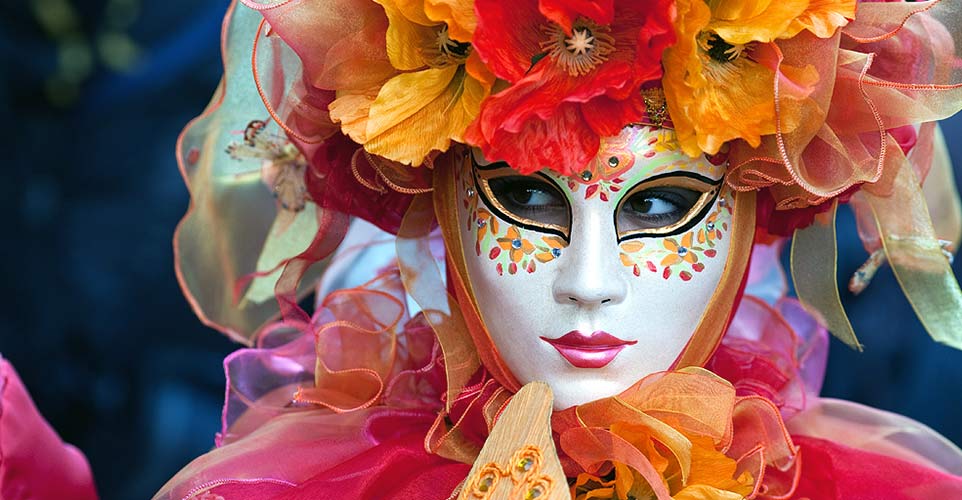
The Carnival is marked by two-weeks-long series of processions, masquerades, traditional ceremonies, music and all-round festivities among the ancient city’s canals, squares and palaces. One of the most celebrated and fascinating events to witness in Europe, the Carnival transforms the beautiful city of Venice as musicians, acrobats, theatre troupes and revellers gather from all over the world to participate in it. For those with a more aristocratic bent, there are dozens of masked balls, brunches in period costume, and gala dinners to attend.
Throughout the Carnival period, there is plenty of entertainment to be enjoyed around St Mark's Square and the adjacent Piazzetta. A series of events takes place in the piazza, which is open to everyone. To add to the festival atmosphere, there are several refreshment stalls in the piazza, selling snacks and drinks like mulled wine, local Bellini cocktails and fritelle, the local specialty.
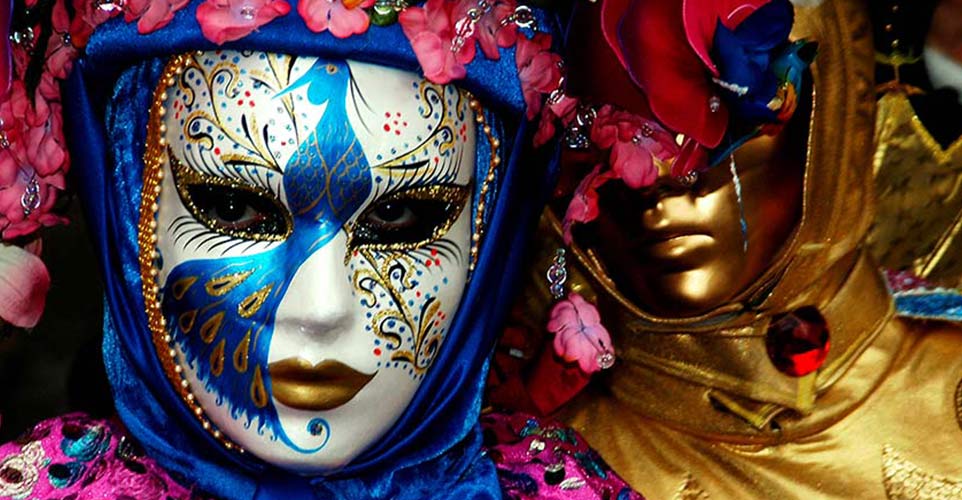
The grand opening celebration of the Carnival takes place on the first Sunday, with an event called Il Volo dell'Angelo (the flight of the angel). This adaptation of an old tradition involves an “angel” (in 2007, this was a female swimming champion; in 2008, it was the rapper Coolio) swinging on harnesses from the bell-tower into the Piazzetta San Marco. One of the big events is generally an afternoon parade of costumes on a catwalk in St Mark's Square. The word carnival comes from the Latin for "Farewell, meat!".
As Lent (which begins on Ash Wednesday) obliged people to fast, during the period up to Ash Wednesday, all meat, butter and eggs had to be used up. This religious formality became the excuse for a party that echoed with pagan festivities. In ancient Rome, Saturnalia and Lupercalia were moments when licentiousness and wantonry were celebrated--a deliberate upturning of the usual social order. Christianity licensed a comparable period of celebrations, from Twelfth Night until the midnight of Shrove Tuesday. Popes Clement IX and XI and Benedict XIII were among those who tried hardest to bring the Carnival back within proper religious limits, but they didn't have much influence over Venice.
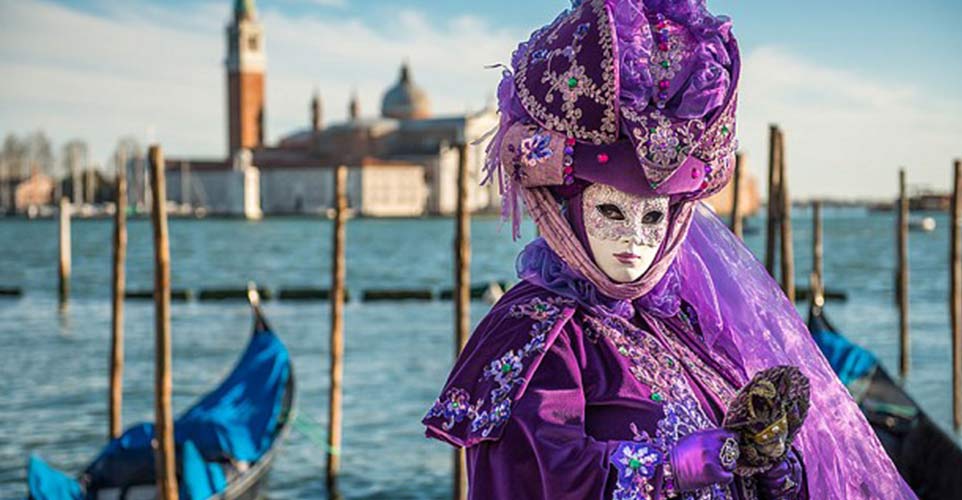
The history of the Venice Carnival tradition began after 1162. The Republic defeated Ulrico, Patriarch of Aquileia, in that year, and began a tradition of slaughtering a bull and 12 pigs in the Piazza San Marco around Shrove Tuesday to commemorate the victory. This celebration gradually grew and 1268 dates the first document, mentioning the use of masks.
The festival of masks
Masks made the Venetian Carnival unique. If you cannot identify the wearer of the mask, you do not know his social status. In this way, Venice temporarily overturned her social order. Some of the masks depicted Commedia dell'Arte characters. Others were more sinister. The white-beaked mask so famous from photographs is that of the plague-doctor; the beak echoes a doctor's long breathing apparatus that held a sponge doused in vinegar, thought to hold the dreaded disease of plague at bay. The Magistrate of Venice, called Doge, was wary of the undue advantage that people could take by wearing the masks, and passed laws limiting their use to during the Carnival period; if you wore a mask at any other time of year, the penalties were severe.
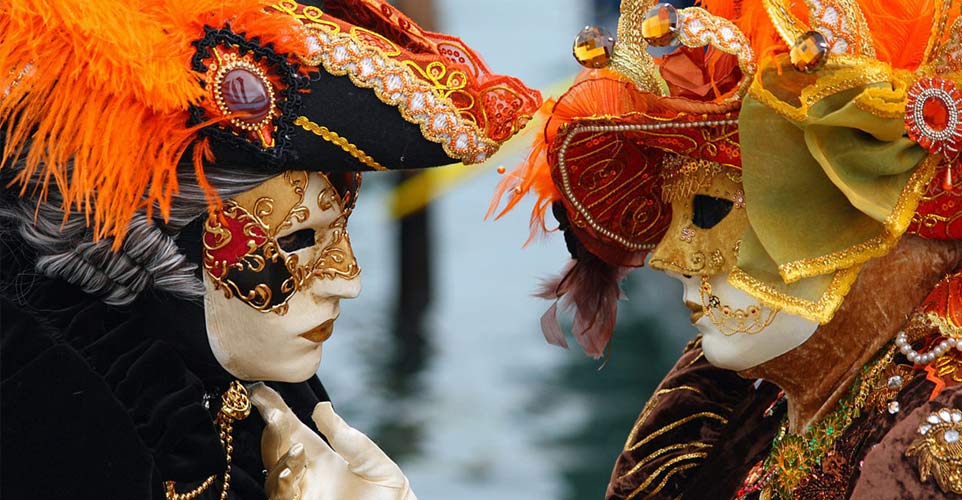
Venetian masks were originally made using the papier-mâché technique. The original masks were rather simple in design and decoration. They often had a symbolic and practical function. Nowadays, most masks are made of leather, with the application of gesso and gold leaf and are all hand-painted, using natural feathers and gems as a decoration.
The Bauta
In the shops of Venice, various types of masks can be found, among which is the ‘bauta’, a mask which covers the whole face, with a stubborn chin line, no mouth, and lots of gilding. One may also find masks sold as ‘bautas’ that cover only the upper part of the face from the forehead to the nose and upper cheeks, thereby concealing the person’s identity but enabling the wearer to talk, eat or drink easily.
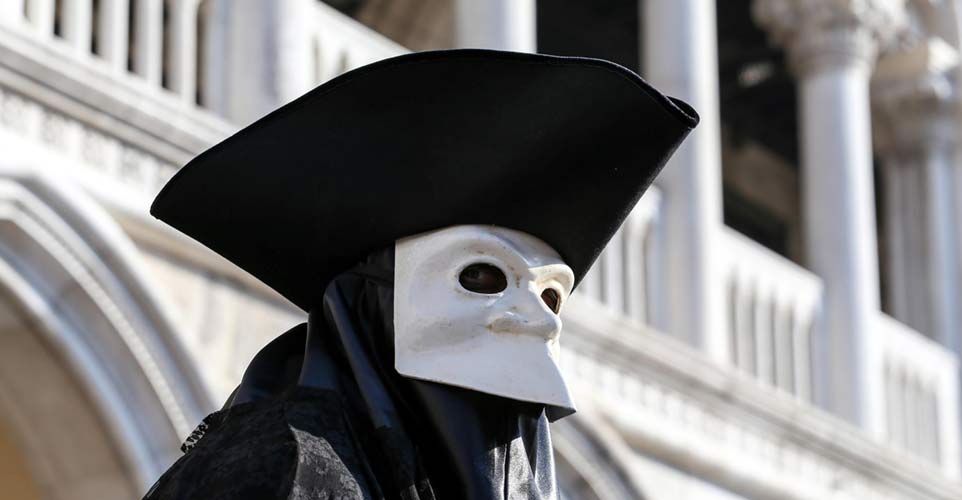
It tends to be the main type of mask worn during the Carnival. It was also used on many other occasions as a device for hiding the wearer's identity and social status. It would permit the wearer to act more freely in cases where he or she wanted to interact with other members of the society, outside the bounds of identity and everyday convention. It was thus useful for a variety of purposes, some of them illicit or criminal, others just personal, such as romantic encounters.
The Moretta
The ‘moretta’ is an oval mask made of black velvet, that was usually worn by women visiting convents. It was invented in France and rapidly became popular in Venice, as it brought out the beauty of feminine features. The mask was finished off with a veil.
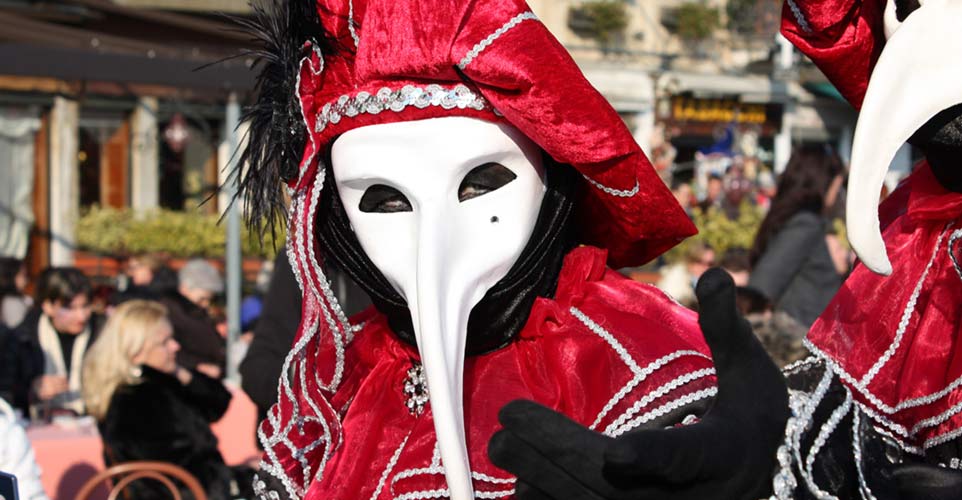
The Larva
The larva, also called the volto mask, is mainly white, and typically Venetian. It is worn with a tricorn and cloak. It is thought that the word "larva" comes from the Latin meaning "mask" or "ghost". It is easy to imagine the effect of a Venetian all dressed in black with a white mask and a black tricorn, going past in the moonlight. Like the bauta, the shape of the mask allows the bearer to breathe and drink easily, and so there is no need to take it off, thus preserving the wearer’s anonymity. These masks were made of fine wax cloth and were much lighter, and were, thus, ideal for eating, dancing and flirting.
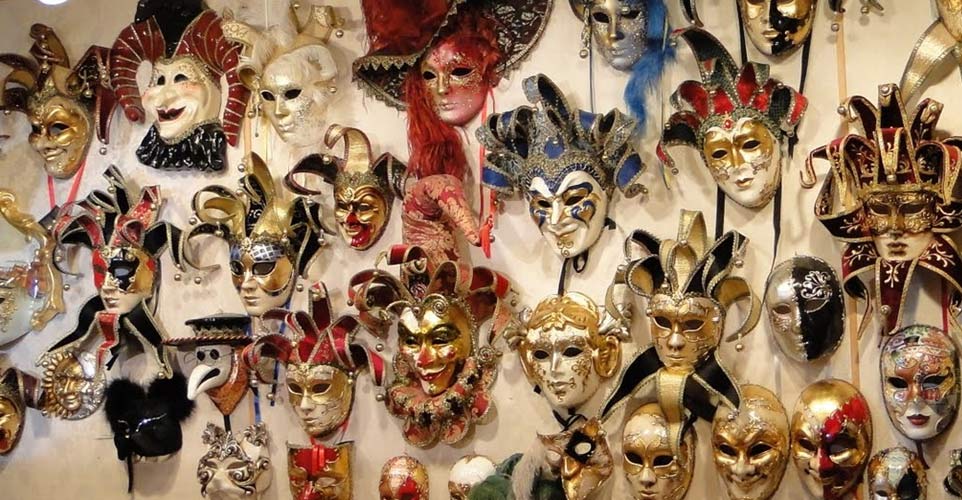
Many faces of Venice
- In Venice proper (including Cannaregio), you can escape the tyranny of the car: there are no scooters or bicycles, either.
- There is a magic to Venice at any time of the year: even in fog and mist, a trip down the Grand Canal, or across the lagoon, can be fascinating.
- Apart from all this, Venice's permanent treasures invite a lifetime's exploration: palaces, churches, art collections, and the streets and canals themselves. At every street corner, there is a new detail to be enjoyed.
- The Rialto fish market, with the accompanying fruit and vegetable markets, is a foodie paradise.
- Venice is one of the few places in the world to which the word 'unique' can truly be applied: it’s a city located in the middle of the sea.
- Venice is no longer sinking. The artesian wells that caused so much damage in the last century have been stopped; the islands are now at level.
- The canals are no anachronism. They are the veins through which the city's lifeblood flows: every service, from the dustmen to the fire brigade, must use a boat.
- Twentieth-century buildings are a rarity. Centuries of outstanding architecture, from the 13th to the 19th, are preserved in (sometimes peeling) grandeur.
